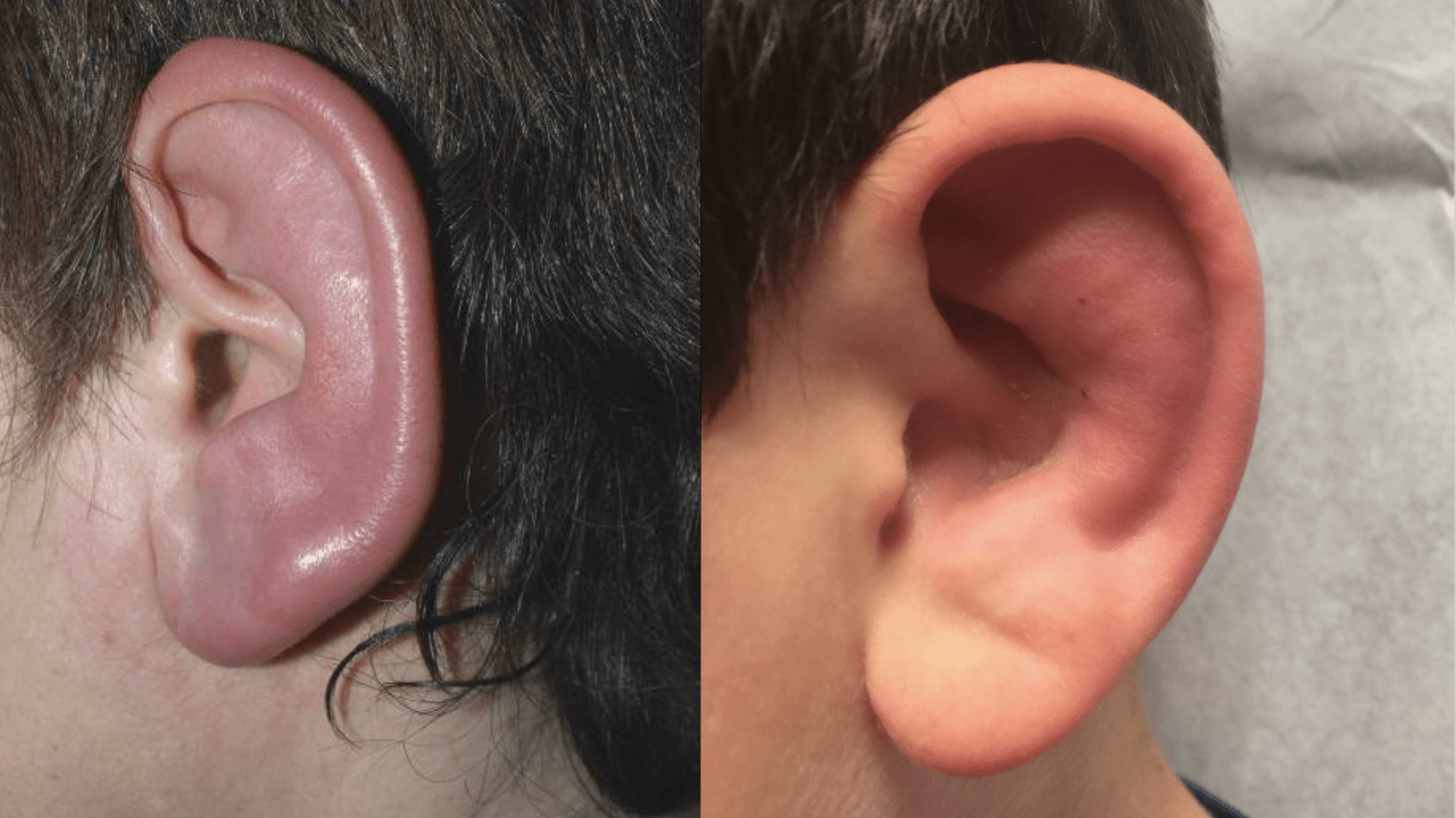
 Take Home Points
Take Home Points
-
Perichondritis is an infection of the cartilage and connective tissue of the ear
-
Perichondritis can be recognized clinically by erythema, swelling and tenderness of the auricle.
-
The most common organism in perichondritis is P. aeruginosa and antibiotics should be tailored to cover this organism
REBEL Core Cast 92.0 – Perichondritis
Background
- Perichondritis may appear to be a simple cellulitis of the ear but, in fact, it represents an infection of the connective tissue of the ear.
- Misdiagnosis and mistreatment of perichondritis is common and can lead to significant morbidity
Critical Point #1: Perichondritis is an infection of the cartilage and connective tissue of the ear
- Perichondritis often appears as simple cellulitis but, the infection goes much deeper.
- Abscess and cavitation of the cartilage is common
Critical Point #2: Perichondritis can be recognized clinically by erythema, swelling and tenderness of the auricle.
- Over time, this may progress to severe otalgia and purulent discharge
- The lobule is often spared as is the external canal
Critical Point #3: The most common organism in perichondritis is P. aeruginosa and antibiotics should be tailored to cover this organism
- Typical cellulitis treatment with cephalexin, TMP-SMX or doxycycline will not treat this disorder
- Fluoroquinolones (I.e. ciprofloxacin) can be used as first line therapy but some patients will fail this treatment due to increasing resistance and require parenteral antibiotics

Right: Perichondritis
References
Noel, Stella Boustany, et al. “Treatment of Pseudomonas aeruginosa auricular perichondritis with oral ciprofloxacin.” The Journal of dermatologic surgery and oncology. 15.6 (1989): 633-637. (PMID: 2723226)
Kullar, Peter, and Philip D. Yates. “Infections and foreign bodies in ENT.” Surgery (Oxford) 30.11 (2012): 590-596. (PMID: 27057069)
Caruso, Andria M., Macario Camacho Jr, and Scott Brietzke. “Recurrent auricular perichondritis in a child as the initial manifestation of insulin-dependent diabetes mellitus: A case report.” ENT: Ear, Nose & Throat Journal 93.2 (2014). (PMID: 24526489)
REBEL EM: Perichondritis
Post Peer Reviewed By: Salim R. Rezaie, MD (Twitter: @srrezaie)
The post REBEL Core Cast 92.0 – Perichondritis appeared first on REBEL EM - Emergency Medicine Blog.
